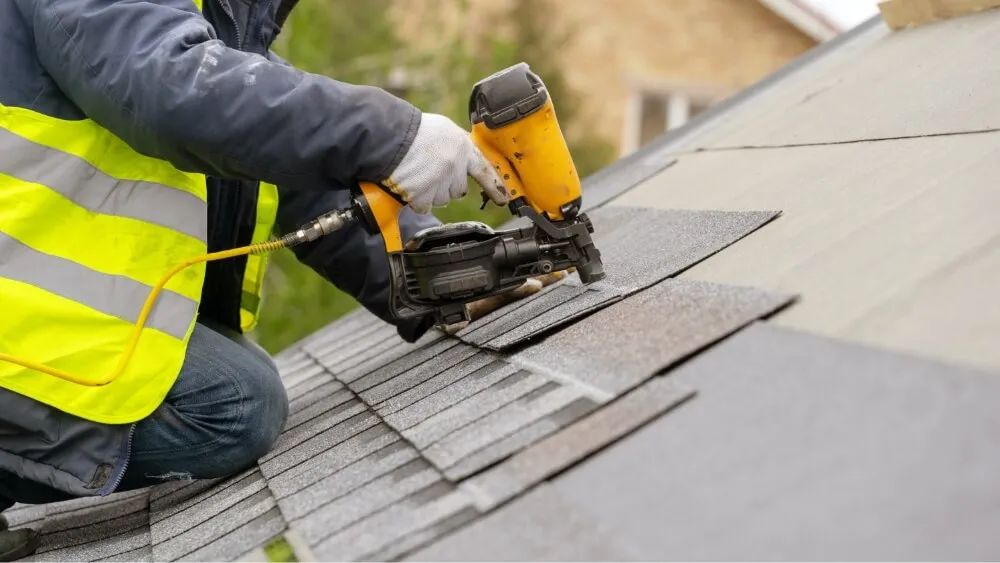Find a skilled Roofer to handle all your industrial roofing needs.
Find a skilled Roofer to handle all your industrial roofing needs.
Blog Article
Exactly How to Assess Various Roof Covering Alternatives for Your Structure Needs
Reviewing roof covering alternatives for your structure calls for a detailed technique that takes into consideration various elements such as the meant use of the structure, local climate conditions, and product qualities. It is vital to consider the advantages and disadvantages of various roof covering kinds, from asphalt roof shingles to steel and clay floor tiles, while additionally considering preliminary expenses and long-term maintenance. Additionally, understanding power efficiency and aesthetic appeal can influence your decision. As you consider these factors to consider, one concern stays: which variables will ultimately lead your option for a sustainable and visually pleasing roofing solution?
Analyzing Your Structure's Requirements
To effectively assess roof options, begin by completely analyzing your structure's requirements. Begin by taking into consideration the building's meant usage, as various structures may demand varying roof covering specifications. Residential roofings often prioritize appearances and insulation, while commercial buildings may concentrate on longevity and load-bearing capacity.
Next, assess the local environment problems that will certainly affect roof performance. Aspects such as temperature level changes, precipitation levels, and wind patterns can influence product option and style. A roof that masters a warm climate might not do too in areas vulnerable to heavy snowfall or extreme warmth.
In addition, assess the architectural honesty of your structure. Make sure that the existing framework can sustain the selected roof materials, especially if considering larger choices. It is additionally important to assess any neighborhood building codes or laws that may determine particular needs for roof.

Contrasting Roof Covering Products
As soon as an extensive evaluation of your building's requirements has been completed, the following step includes contrasting numerous roof covering products. Each product offers unique advantages and drawbacks, making it necessary to align your choice with your specific demands and conditions.
Asphalt shingles are commonly acknowledged for their cost and ease of setup, making them a popular option for residential buildings. On the various other hand, metal roof covering, recognized for its sturdiness and long life, can hold up against extreme weather condition problems but might include a higher first investment.
Clay and concrete tiles offer outstanding thermal insulation and visual appeal, especially for Mediterranean-style design, yet they require an even more durable architectural support as a result of their weight. Timber drinks offer a natural look and good insulation residential properties but might demand a lot more maintenance and are vulnerable to fire hazards.
Evaluating Price and Budget Plan
Assessing your roof covering alternatives requires a careful assessment of price and budget considerations. The total allocate a roof covering task comprises a number of elements, consisting of product expenses, labor expenses, upkeep, and possible long-term cost savings. It is vital to develop a clear budget before checking out details roof covering materials, as this will certainly lead the decision-making procedure and assist you avoid overspending.
Begin by acquiring quotes from several contractors to understand labor expenses in your region. Make sure that these quotes consist of all required services, such as elimination of the old roof covering, installation, and any type of additional functions, like insulation or air flow improvements - Sylvania Roofing Contractor. Next off, assess the price of different roofing products, taking into consideration both first installation prices and anticipated lifespan

Understanding Power Performance
Power performance plays a crucial function in the choice of roof covering products and systems, considerably influencing both power intake and overall convenience within a building. A well-chosen roofing can boost thermal efficiency, lowering the demand for heating and cooling systems, which consequently reduces energy costs and decreases ecological influence.
When evaluating roofing choices, think about materials that reflect as opposed to absorb warm. Light or reflective roof products can considerably reduce roof covering surface area temperatures, bring about lower power usage during warm months. Additionally, correct insulation and air flow are important to enhance the energy efficiency of the entire roof. Insulation protects against warmth transfer, while ventilation minimizes warmth buildup in the attic room space.
Another vital variable is the roof's durability and maintenance demands. Resilient materials that call for less regular substitute add to long-term power savings. Moreover, the power performance of a roof can likewise be examined through its conformity with well-known sustainability scores such as power STAR or LEED.
Taking Into Consideration Aesthetic Charm
A roofing system's aesthetic charm significantly influences the total look of a building, matching its building style and boosting aesthetic appeal. Roofing Contractor. When examining roofing choices, it is vital to consider how the selected product, shade, and design will certainly integrate with the existing framework and neighborhood. A well-designed roof can boost also the most basic of buildings, changing them into visual prime focus
Different roofing products provide different aesthetic qualities. Standard tiles might stimulate a timeless beauty, while metal roofing can impart a modern, smooth appearance. In addition, the shade of the roof covering product plays a vital duty; lighter Roofer tones can make a structure appear more spacious, while darker tones may develop a cozier setting.
Moreover, building aspects, such as dormers and eaves, can improve the roof's visual impact. It is recommended to seek advice from specialist designers or architects to make certain the picked roof alternative aligns with the overall style intent. Ultimately, a roofing system must not just give useful advantages yet additionally add favorably to the structure's aesthetic, reflecting the owner's preference and the character of the surrounding setting.
Conclusion

Report this page